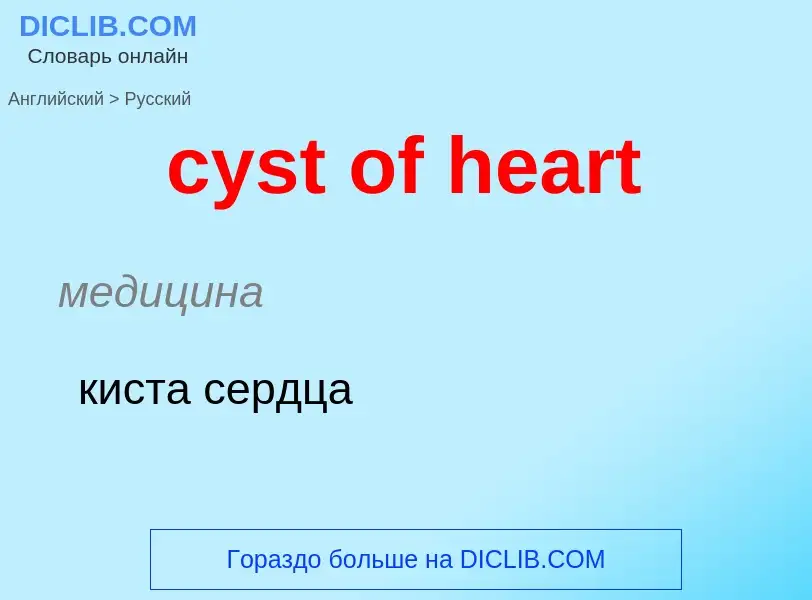Перевод и анализ слов искусственным интеллектом ChatGPT
На этой странице Вы можете получить подробный анализ слова или словосочетания, произведенный с помощью лучшей на сегодняшний день технологии искусственного интеллекта:
- как употребляется слово
- частота употребления
- используется оно чаще в устной или письменной речи
- варианты перевода слова
- примеры употребления (несколько фраз с переводом)
- этимология
cyst of heart - перевод на русский
медицина
киста сердца
медицина
зубная корневая киста
медицина
однокамерная (солитарная) киста кости
костная киста
Определение
.
Википедия

An ovarian cyst is a fluid-filled sac within the ovary. Often they cause no symptoms. Occasionally they may produce bloating, lower abdominal pain, or lower back pain. The majority of cysts are harmless. If the cyst either breaks open or causes twisting of the ovary, it may cause severe pain. This may result in vomiting or feeling faint, and even cause head aches.
Most ovarian cysts are related to ovulation, being either follicular cysts or corpus luteum cysts. Other types include cysts due to endometriosis, dermoid cysts, and cystadenomas. Many small cysts occur in both ovaries in polycystic ovary syndrome (PCOS). Pelvic inflammatory disease may also result in cysts. Rarely, cysts may be a form of ovarian cancer. Diagnosis is undertaken by pelvic examination with an ultrasound or other testing used to gather further details.
Often, cysts are simply observed over time. If they cause pain, medications such as paracetamol (acetaminophen) or ibuprofen may be used. Hormonal birth control may be used to prevent further cysts in those who are frequently affected. However, evidence does not support birth control as a treatment of current cysts. If they do not go away after several months, get larger, look unusual, or cause pain, they may be removed by surgery.
Most women of reproductive age develop small cysts each month. Large cysts that cause problems occur in about 8% of women before menopause. Ovarian cysts are present in about 16% of women after menopause and if present are more likely to be cancer.



.jpg?width=200)









![[[Serous carcinoma]]. [[Serous carcinoma]].](https://commons.wikimedia.org/wiki/Special:FilePath/Serous carcinoma (3061775966).jpg?width=200)

![[[Transvaginal ultrasonography]] of a hemorrhagic ovarian cyst, probably originating from a [[corpus luteum cyst]]. The coagulating blood gives the content a cobweb-like appearance. [[Transvaginal ultrasonography]] of a hemorrhagic ovarian cyst, probably originating from a [[corpus luteum cyst]]. The coagulating blood gives the content a cobweb-like appearance.](https://commons.wikimedia.org/wiki/Special:FilePath/Hemorrhagic ovarian cyst.jpg?width=200)
![[[Transvaginal ultrasonography]] showing a 67 x 40 mm [[endometrioma]], with a somewhat grainy content. [[Transvaginal ultrasonography]] showing a 67 x 40 mm [[endometrioma]], with a somewhat grainy content.](https://commons.wikimedia.org/wiki/Special:FilePath/Endometrioma.jpg?width=200)





